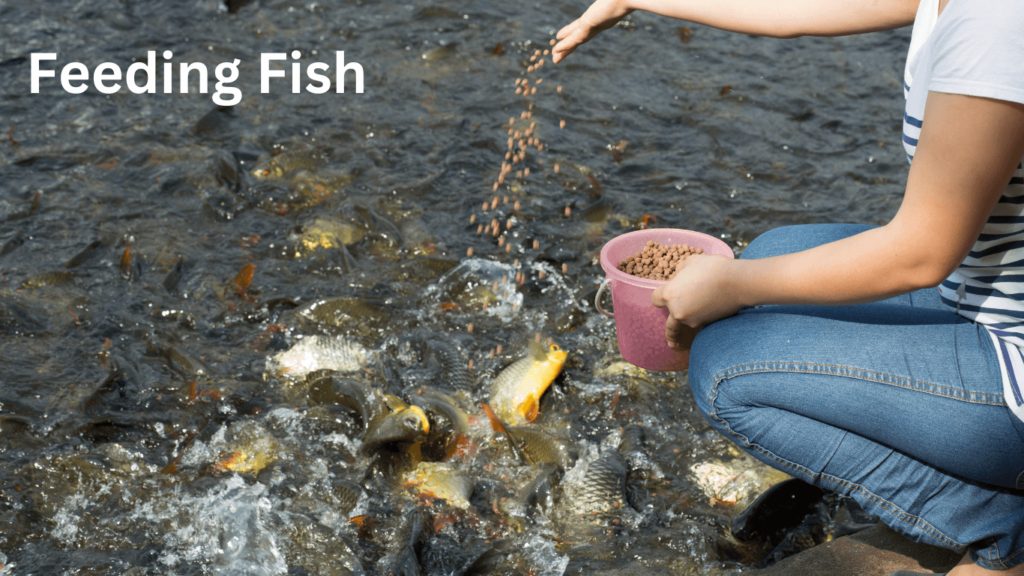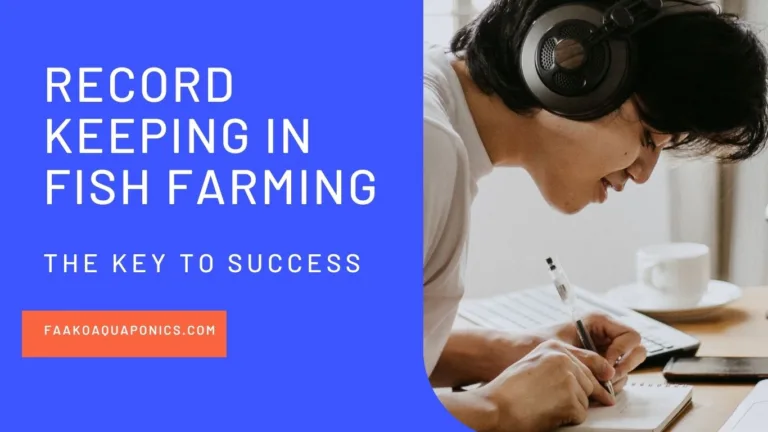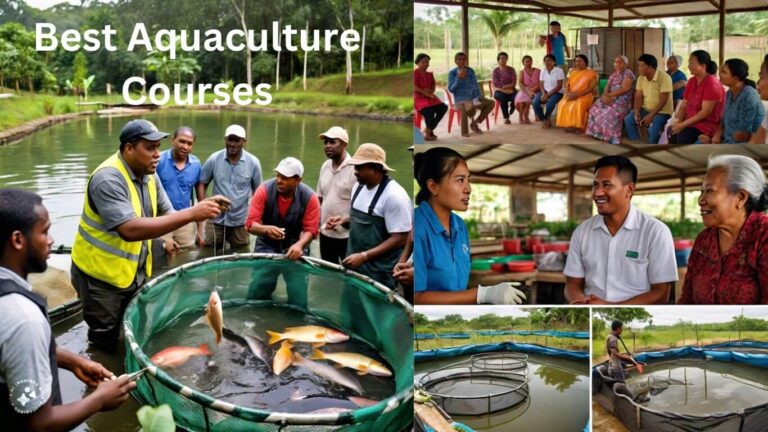The best time to feed fish is a topic that often confuses many fish farmers, especially beginners. Feeding your fish at the wrong time or under the wrong conditions can lead to overfeeding, water contamination, and other issues that affect fish health and farm profitability.
In this post, we’ll dive into how weather conditions, water temperature, and time of day impact the feeding behavior of fish, specifically catfish.
Whether you’re new to fish farming or looking to optimize your feeding strategies, understanding the best time to feed fish will help you achieve better growth, reduce costs, and prevent common fish farming issues.
Why Feeding at the Right Time Matters
Feeding fish might seem like a simple task, but there’s more to it than meets the eye. Fish, like all animals, have optimal feeding windows where they are more active and ready to consume food. This is influenced by a variety of factors, including weather, water temperature, and time of day.
In my video, I demonstrated how different weather conditions affect fish behavior during feeding. When the weather was cloudy and cold, the fish showed little interest in the feed, even though they were typically responsive on clear, sunny days. This is because cold weather slows down their metabolism, reducing their appetite.
You may watch the video below after reading this article.
So, the key takeaway? The best time to feed fish is when they are most active, and you need to adjust based on the environmental conditions.
How Weather Affects Fish Appetite
The weather plays a significant role in determining when to feed fish. When it’s too hot or too cold, fish become sluggish, and their appetite decreases. For instance:
– Cloudy and Cold Weather: In cooler temperatures, fish, particularly catfish, tend to be less active. As I showed in my video, feeding your fish under these conditions often leads to uneaten feed, which can quickly degrade the water quality. Poor water quality may result in stress, disease outbreaks, and even death in extreme cases.
– Hot Weather: On the other end of the spectrum, very hot weather can also suppress feeding behavior. High water temperatures decrease the dissolved oxygen levels, making fish less eager to eat. Additionally, feeding during hot periods can lead to overfeeding, as the fish may not consume all the feed, which again affects water quality negatively.
In both cases, it’s essential to monitor the fish’s reaction to the feed. If they are not actively eating, it’s better to reduce the amount or skip feeding until conditions improve. Overfeeding during unsuitable weather can cause waste build-up in the pond, leading to water contamination and health problems for your fish.
Time of Day and Feeding Response
The time of day is another critical factor in determining the best time to feed fish. Fish are generally more active in the early morning or late afternoon when the water temperature is more moderate. Midday, when the sun is at its peak and the water is hottest, is not an ideal feeding time.
In my experiment, the fish responded well to feeding in the evening when the sun’s intensity had gone down. They were much more enthusiastic and consumed more of the feed, compared to just a little on a colder, cloudy day.
This shows that feeding during the cooler parts of the day, such as early morning or late afternoon, is often the best time to feed fish to maximize their appetite and ensure they consume all the food provided.
The Risks of Overfeeding
Overfeeding is one of the most common mistakes made by fish farmers. It’s easy to assume that more feed equals faster growth, but that’s far from the truth. As highlighted in my video, overfeeding can lead to a lot of problems:
– Water Quality Issues: Uneaten feed decomposes and releases harmful substances like ammonia into the water, leading to poor water quality. This can stress the fish and increase their susceptibility to diseases.
– Fish Mortality: Poor water quality can directly lead to fish deaths, especially if dissolved oxygen levels drop too low.
– Cannibalism: When the water quality is compromised, fish become stressed and may even turn on each other. In some cases, cannibalism can occur, particularly in species like catfish.
– Economic Losses: Overfeeding increases your costs unnecessarily, as the extra feed doesn’t contribute to the fish’s growth. Worse still, poor water quality and fish health can lead to reduced yields and profit loss.
How to Adjust Feeding According to Fish Behavior
One of the most effective ways to avoid overfeeding and ensure your fish grow healthily is to observe their feeding behavior. In my video, I mentioned the importance of responsive feeding — adjusting the amount of feed based on how the fish react.
If your fish are active and eagerly eating, it’s a good sign to continue feeding. However, if they show little interest or stop eating midway through, it’s time to stop feeding. Feeding them under less-than-ideal conditions (cold or excessively hot weather) only leads to uneaten food accumulating in the pond, which can degrade the water quality.
Responsive feeding is crucial to maintaining both the health of your fish and the quality of the water they live in. Keeping an eye on weather changes and observing the fish’s response helps you determine the best time to feed fish and avoid potential disasters.

Understanding Fish Metabolism and Weather Conditions
Fish, especially species like catfish, have a metabolism that is highly dependent on their surrounding environment. When the weather is too cold or hot, their metabolic rate drops, and so does their appetite. Thus, forcing feed into their system when they are not metabolically prepared to digest it does more harm than good.
Catfish, in particular, are sensitive to changes in water temperature and oxygen levels. When the water temperature drops too low, catfish slow down and tend to move less, meaning they won’t need as much food. The same goes for when water temperatures soar, as they’ll consume less food to conserve energy.
The bottom line is that understanding fish metabolism and how it fluctuates with environmental conditions helps you determine the best time to feed fish effectively
To wrap up, here are some key feeding tips that every fish farmer should follow:
Feeding Tips for Fish Farmers
1. Observe Weather Patterns: Monitor the weather and avoid feeding your fish during extreme hot or cold conditions. Opt for cooler parts of the day like early morning or late evening.
2. Responsive Feeding: Feed based on how your fish react. If they are not active, reduce the amount of feed or skip the session entirely.
3. Avoid Overfeeding: Always provide just enough feed that the fish can consume within 10-15 minutes. Overfeeding your fish leads to water quality issues and economic losses.
4. Regular Water Testing: Keep an eye on water quality by testing parameters like ammonia and dissolved oxygen. Poor water quality can quickly spiral into disease and death.
5. Seasonal Adjustments: Fish will have different feeding patterns depending on the season. In colder months, you’ve to reduce feeding frequencies to match their lower metabolic rates.
Conclusion: When is The Best Time to Feed Fish?
Knowing the best time to feed fish is crucial for the health of your fish and the success of your fish farm. By observing the weather, water temperature, and fish behavior, you can adjust your feeding practices to ensure your fish are getting what they need without compromising water quality. Remember, overfeeding does more harm than good — responsive feeding is the key to maintaining a healthy and profitable fish farm.
For more in-depth knowledge of fish farming practices, you may check out this post: Comprehensive Guide to Fish Farming: From Setup To Harvest





